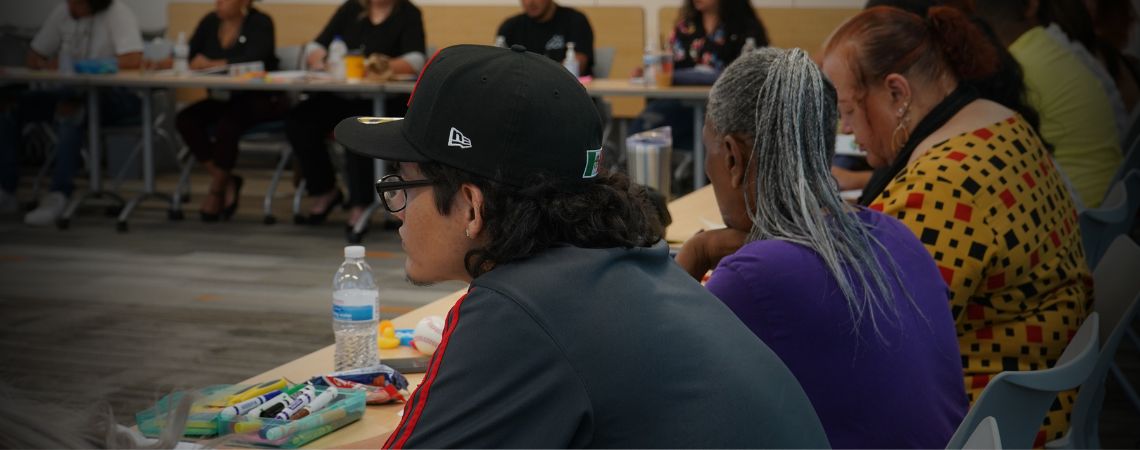Education positively shapes wellbeing—it is fundamental to economic mobility and reducing socioeconomic and political inequalities. As America recovers from the COVID-19 pandemic and the longstanding damage caused by structural racism—quality education and schools have become even more central to shaping equitable opportunities and societies for people of color. Research emphasizes the lifelong impact of education on health. Differences in education and wealth established earlier in life are strongly associated with disparities in healthy aging across older adults. 1


Amidst issues with school attendance that have been exacerbated by the pandemic, and which we discuss in our blog, The Impact of Chronic Absenteeism, it is imperative to motivate youth to attend and complete school and higher education. Social-emotional skills are prized in the modern work place. Beyond providing education, schools provide youth with essential social and emotional development, physical exercise, safety, and support for those from poor, neglectful, violent, or abusive households. Research also notes that during the American lockdown, the incidence of child abuse and neglect increased, yet reporting in some states fell, perhaps reflecting the loss of school-based monitoring. 2 Teachers and school must address environmental factors that create barriers to consistent school attendance for low-income families. These include transportation support, home visits, food vouchers, partnering with school-based clinics and community-based organizations, and school-based counseling and social-emotional support programs.
Additionally, administrators, teachers and parents can receive training and support to motivate students and teach them resiliency skills. The Parent Institute 3 has outlined the following evidence-informed principles to create ecosystems that support educational attainment. Community-based organizations and community health workers can play key roles in providing evidence-informed support to parents and schools to create these healthy ecosystems. For example, El Sol Neighborhood Educational Center specializes in strengthening and supporting families in developing the necessary skills to support their children

Behavioral Incentives to Support Youth Attendance
1 Set Proper Expectations: parents and teachers set youth up for success when they set high expectations for children and simultaneously equip the children with the skills and resources to meet these expectations. Communication is key: using clear, supportive and truthful communication with children helps them understand their own strengths and opportunities to grow. Setting proper expectations also includes investing the time to help children understand their own interests, skills and talents, and designing expectations related to these. And it’s important to review expectations with children every six months. El Sol Neighborhood Educational Center’s promotores have been trained to provide effective parent education and support to equip parents with appropriate communication skills to set appropriate expectations for their children and to advocate for these expectations for their children at their schools.

2 Teach youth to set appropriate educational goals: goals turn expectations into realities. Research show that adults and youth are more likely to achieve goals when they are written in clear, specific, and measurable ways. And children and adults alike respond positively to rewards when goals are successfully met

3 Incentivize parents and families to teach youth that school is important: This can be difficult when families are also contending with economic strain. Finding employment may compete with school attendance. Students succeed when parents form supportive relationships with teachers; parents and teachers can agree on appropriate ways to exchange goals and information about the student. Attending cafecitos, school nights, school fairs and conferences shows children that school is a priority. And schools have the opportunity to schedule these events as flexibly and creatively as possible – using different modalities – to support parents’ availability, preferred languages, and schedules.

El Sol Neighborhood Educational Center promotores can support school districts with home visitation programs and school-based support programs to help educate parents about how they can prioritize the importance of education with their children.
Create a supportive environment for homework and studying – this can be extremely challenging for students who are unhomed or in living environments that contain multiple generations living together. Home visitation programs can support parents and families to incentivize education for their children.




4 Support youth’s individual learning styles:
Children are more likely to learn effectively if they use the learning style that feels most comfortable and natural to them. Parents and teachers can learn to identify and support children in using the best learning style for them: auditory learning (rhymes, songs, podcasts, audio books, oral instructions and oral quizzes); visual learning (videos, graphs, reading, written tests); and kinesthetic learning (learning by doing: building a model or making a chart; these learners need to participate, move their bodies, and participating in hands-on science labs). Parents can create home environments that support their children’s specific type of learning.


5 Speak with encouraging language: Research shows that encouragement makes stronger developmental impacts than praise with children. 4 Teachers and parents can take the time to notice children’s effort and progress (“I can tell you worked hard on that.” is an example of encouragement, while a praise statement might be, “Good job! You got an ‘A’!”). The critical difference is that words of encouragement support children in being self-motivated while praise teachers children to rely on adults’ assessments of their accomplishments

6 Reinforce learning in the community and home: motivated learners understand that learning happens everywhere–not just at a school desk. Parents and community-based organizations can use creative and imaginative ways to reinforce school-based learning. An example: families and community organizations can view film versions of the literature that youth read in school. Families and community members can learn alongside youth as they read classic literature in this way, and hold discussions about characters and plot. Another interactive example is reading the newspaper or watching Youtube news and science videos with children and discussing them. Some fun, free channels include KidsNewsTube or Mystery Doug on Youtube.

7 Encouraging resilience: Encouraging adults and youth alike to be resilient supports lifelong learning, healthier decision-making and wellbeing. Resilient children are more likely to be motivated to learn. There are 4 key qualities to resiliency:
a) a belief that an adult in their life will always be there for them with love and support;
b) the ability to solve many of their own problems;
c) the ability to focus on their own strengths, and
d) regard mistakes as something that happen to everyone and foster learning.
Skills that parents and teachers can learn to foster resilience include:
talents and interests
empathizing with children
providing children with reasonable choices;
changing approaches when they clearly don’t work; and
supporting children’s talents and interests
El Sol delivers programs such as our Parent-Child Home Program (PCHP) and the Home Instruction for Parents of Preschool Youngsters (HIPPY). These programs teach parents how to improve school readiness and academic success with a focus on families challenged by poverty, social isolation, language and literacy barriers, and limited educational opportunities.
By implementing the principles listed, schools, community organizations and parents can work collectively to motivate children to work hard and make the most of their educational opportunities. It is also important to consider two key factors:
1) schools, cities, healthcare systems, and community organizations must work simultaneously and collectively to address the environmental barriers and social determinants of health and learning. This will create a culture of health and learning that can make it easier for parents to help their child use whatever strengths and abilities they have now or can develop in the future to be resilient and feel motivated to attend and succeed in school.
2) Schools alone cannot address the complexities and longstanding issues that undergird absenteeism and barriers to learning. Community-based organizations like El Sol, the implementation of promotores, and the innovative use of home visits and culturally inclusive parental educational supports are most effective in conjunction with school-based interventions and parent-led home supports.
Contact [Name and title] at [email address and phone number] to learn more about El Sol Neighborhood Educational Center’s Community Partnerships in Education that support school staff, teachers and parents in creating ecosystems to foster resilient youth and incentivizing student success.
[1]https://www.thelancet.com/journals/lanpub/article/PIIS2468-2667(20)30144-4/fulltext
[2] https://www.thelancet.com/journals/lanpub/article/PIIS2468-2667(20)30143-2/fulltext
[3]https://www.wssd.k12.pa.us/Downloads/7%20ways%20to%20motivate%20children%20in%20school.pdf
[4]https://www.wssd.k12.pa.us/Downloads/7%20ways%20to%20motivate%20children%20in%20school.pdf










